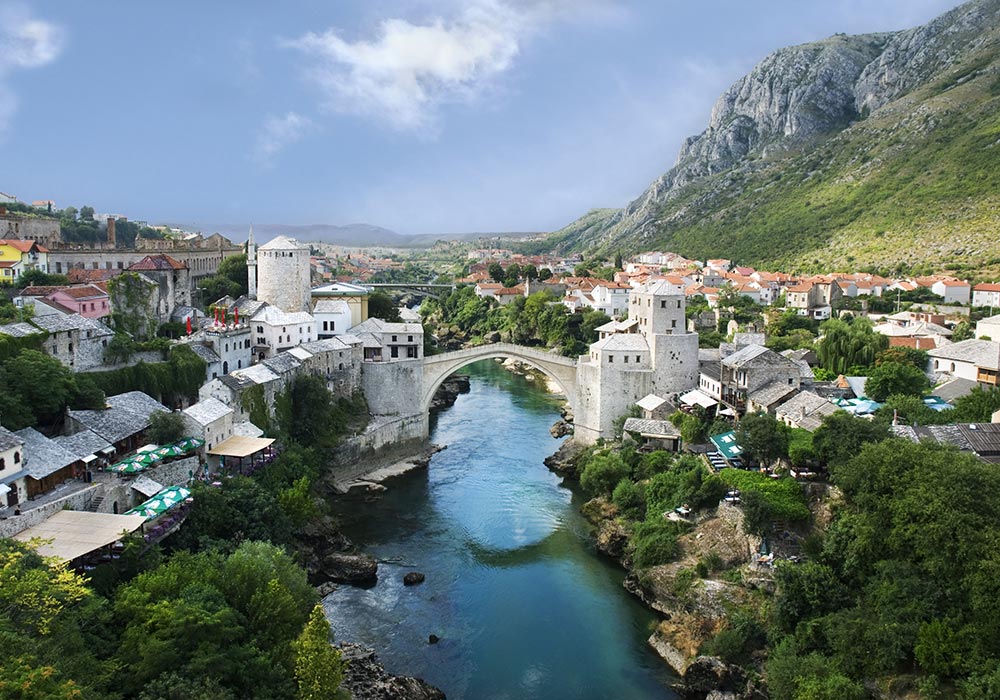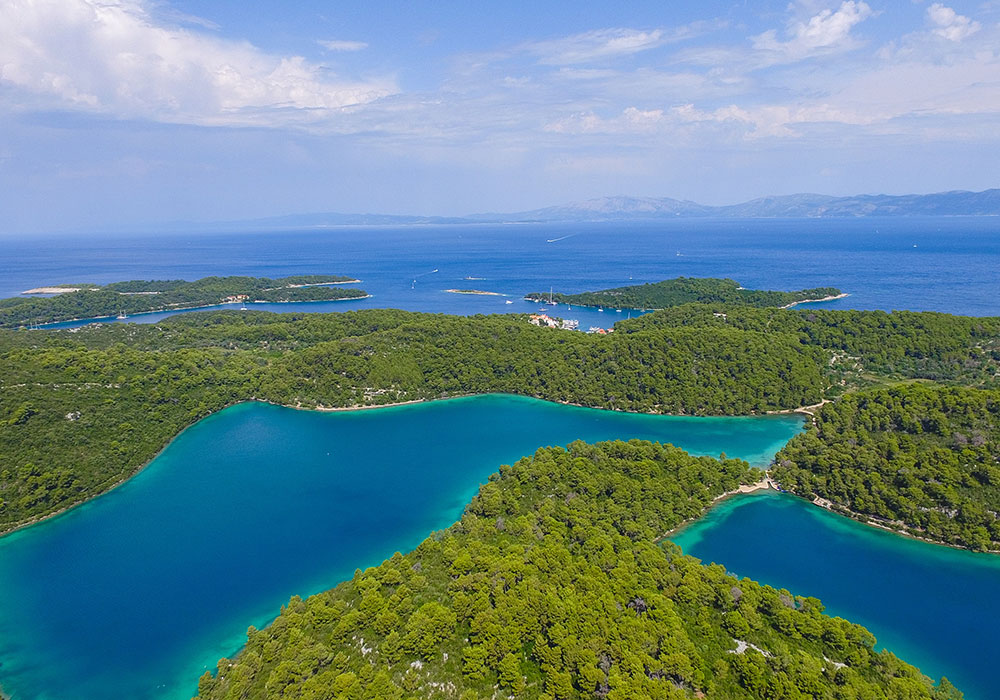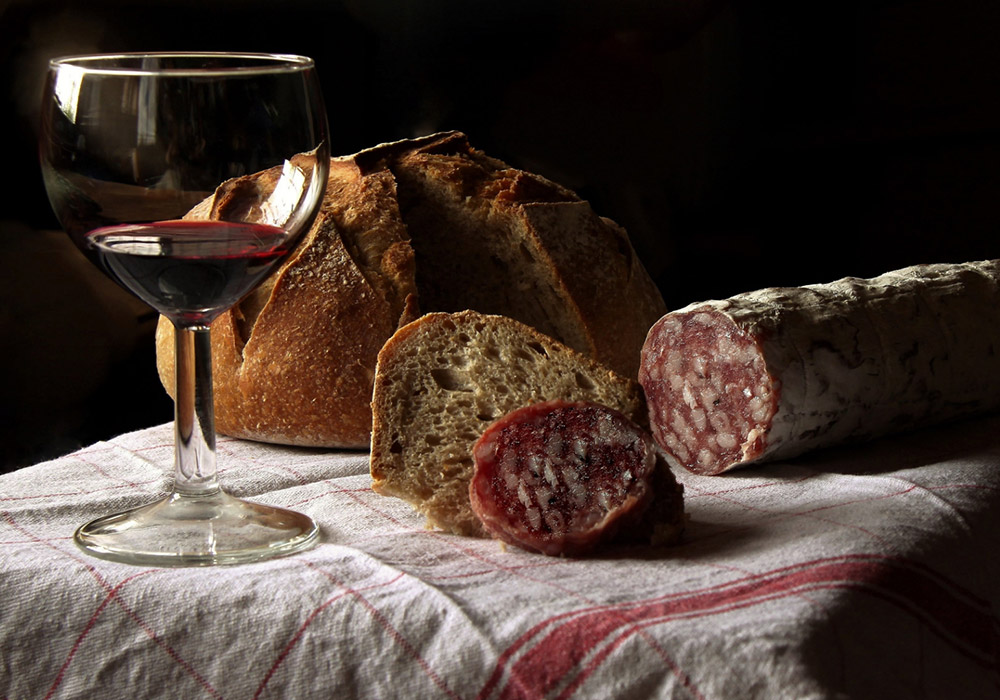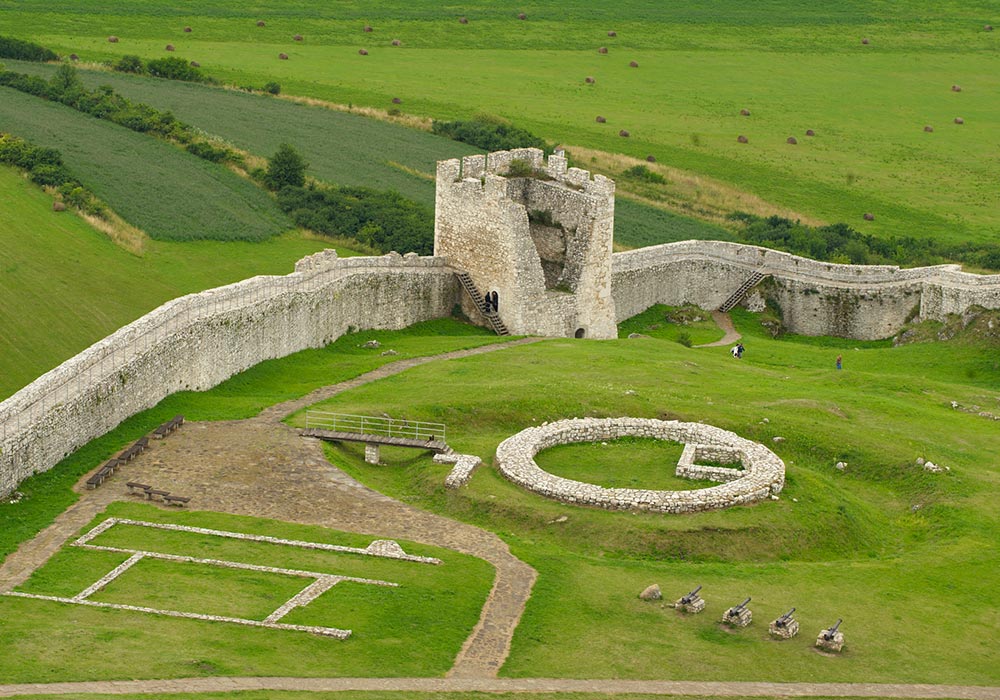JOURNEY OF CULTURE AND HISTORY
Outstanding universal values
- Information
- Tour Plan
- Location
- Gallery
- Similar Tours
What's included
- Transfer between the airport and hotels
- Meals according to the program (half board)
- In-depth sightseeing program
- All taxes and fees
- Deluxe hotels with central locations
- Deluxe air-conditioned coaches
- Professional local guides throughout the tour
- Travel expenses (land only)
- All entrance fees as per itinerary
- Departure Taxes or Visa handling fees
- Excess baggage charge
- Personal expenses
- Visa arrangements
- International flights
- Free time entrance tickets to monuments and museums
- Day 1 - Arrive, Check-in, Orientation, Welcome Dinner
- Day 2 - Prague
- Day 3 – Prague
- Day 4 – Travel to Krakow
- Day 5 – Krakow
- Day 6 – Wieliczka, Krakow
- Day 7 – Auschwitz, Karkow
- Day 8 – Aggtelek, Budapest
- Day 9 – Budapest
- Day 10 – Balatonfüred, Tihany
- Day 11 - Budapest
- Day 12 - Departure
Welcome to Prague
Travelling to Prague. Arrival and transfer to the hotel. Welcome dinner. Orientation walk.
Prague tour
Visit the Old Town Square, the Tyn Church, the Astronomical clock and the Old Town Hall tower.
Lunch in a local restaurant.
Stroll through the Charles bridge and see the Prague Castle.
Dinner in a local restaurant.
Enjoy a concert in the Municipal House.
Prague tour #2
Explore the Jewish Quarter and visit the St. Nicholas Church (Malá Strana).
Lunch in a local restaurant.
Enjoy your free time (optional program: National Museum).
Dinner in the hotel.
Travelling to Krakow
Stop on the way in Kroměříž, the most beautiful historical town in the Czech Republic.
Lunch in a local restaurant.
Visit the Kroměříž castle which is part of the World Heritage Sites.
Orientation walk.
Dinner in a local restaurant.
Krakow tour
Stroll along the Jewish Quarter.
Lunch in a local restaurant.
Visit the Wawel Royal Cathedral and its surroundings.
Enjoy your free afternoon.
Dinner in the hotel.
Concert in the evening.
Material and spirit in a salt mine
Visit the Wieliczka Salt Mine.
Have a special lunch underground in the Salt Mine.
Walk through the famous Kanonicza street.
Enjoy your free time in the Cloth Hall (Sukiennice-shopping mall).
Dinner in the hotel.
Nazi camp visit
As an optional program travel to Auschwitz and visit the Birkenau Museum in Krakow.
Lunch in a local restaurant.
In your free time explore Krakow on your own (optional program: Palace of Arts).
Dinner in a local restaurant located in the Kazimierz district, the former Jewish Quarter of Krakow.
Travel to Hungary
Travelling to the Hungarian capital city, Budapest.
Stop on the way in Aggtelek where you will have a lunch.
Visit the Caves of the Aggtelek Karst which belong to the World Heritage Sites.
Dinner in the hotel.
Orientation walk.
Budapest tour
Visit the Hungarian Parliament.
Lunch in a local restaurant.
Explore the Buda Castle district.
Enjoy a cruise on the Danube and admire the Budapest panorama which is also a World Heritage Site.
Dinner on board.
A trip to the Hungarian coutryside
Discover the biggest lake of Central Europe, the Balaton.
Visit the Benedictine Abbey of Tihany.
Lunch in a local restaurant.
Visit the Tihany Peninsula which belongs to the Balaton Uplands National Park.
Enjoy your free time in Balatonfüred, optional program: Vaszary Villa Gallery.
Dinner in a local restaurant.
Travelling back to Budapest.
Budapest tour #2
Walk along the Váci street and visit the Great Market Hall, explore the Hungarian products.
Lunch in a local restaurant.
Enjoy your free time or one of the relaxing thermal baths of Budapest (optional program).
Farewell dinner at New York Café.
Farewell
Transfer to the airport for your flight.
More about Budapest
Besides its stunning natural setting with rich architectural and historical heritage, the city offers an unmatched combination of culture, blooming gastronomy and the advantages of thermal waters and world heritage sites. Humankind has played a role in shaping the pretty face of Budapest. Architecturally, the city is a treasure, with enough baroque, neoclassical, Eclectic and art nouveau buildings to satisfy everyone. Overall, though, Budapest carries a fin de siècle feeling, for it was then, during the capital’s ‘golden age' in the late 19th century, that most of what you can see today was built.
Divided in two by the Danube, Budapest is made up of Buda on one side: with Ottoman-era thermal baths at the foot of Gellért Hill, the Royal Palace and Matthias Church, it radiates calm and piece. On the other side lies Pest, vibrant and lively, with its slew of museums rich in cultural and historical treasures, extraordinary Art Nouveau architecture, its majestic Parliament building, Saint Stephen’s Basilica surrounded by pedestrian streets, and its entirely renovated Jewish Quarter and Palace District. Massive murals, small pop-up sculptures and ruin bars full of random décor – Budapest is brimming with urban art. Striking paintings brighten the city’s old firewalls and passers mood.
While traditional goulash soup and pörkölt have a well-established reputation in the Hungarian cuisine, the culinary revolution has taken over Budapest, as well. From street-food made from local, all-natural ingredients to haute cuisine creations marked in the Michelin Guide, Budapest has it all. Budapest’s reputation as a food capital dates largely from the late 19th and the first half of the 20th century and, despite a fallow period under the communism, the city is once again commanding attention. So, too, are Hungary's excellent wines – from Eger's complex reds and Somló’s flinty whites to honey-sweet Tokaj, a favorite of emperors and presidents. Even if you aren't the type who waxes poetic about silky tannins, chalky soils, and lingering finishes, you'll likely enjoy the lively Budapest wine bars. Keep a special eye out for grape varietals indigenous to Hungary, including kadarka and kékfrankos (red), and furmint, hárslevelű, and juhfark (white).
Budapest is blessed with an abundance of hot springs. As a result, ‘taking the waters’ has been an experience here since the time of the Romans. The array of bathhouses is generous – you can choose from Turkish-era, art nouveau and modern establishments. Some people come seeking a cure for whatever ails them, but the majority are there for fun and relaxation.
Budapest has something for everyone – from dramatic history and flamboyant architecture to healing thermal waters and a nightlife that is unrivalled in Eastern and Central Europe.
More about Central Europe
At once natural and refined, folksy and cultured: the combination of mountain rusticity with old-world style captivates in Central Europe.
Teutonic half-timbered villages, graffiti-decorated Renaissance squares, medieval walled towns…. Wander the darkly Gothic alleyways of Prague, admire the baroque excess of Salzburg or take in the colourful old-Venetian influence on the Slovenian port of Piran. Poland and the Czech Republic seem to have more than their fair share of medieval masterpieces, but you can find narrow lanes and quaint townscapes throughout the region – from Bern, Switzerland to Bardejov, Slovakia. Smaller gems such as Bamberg, Germany are often far from the tourist radar. On mornings when the mists lie heavy and crowds are few, you might imagine yourself in an earlier century.
Nourishing yourself is more fun in a great atmosphere, and Central Europe's abundance of outdoor cafes, beer halls and coffee houses offer just that. When the temperatures rise in spring, outdoor tables proliferate along with the daffodils and tulips. Enjoy a plate of pasta while admiring the Slovenian coast, nosh pierogi (dumplings) on a Polish cobblestone street or dip into fondue lakeside in Switzerland. Beer gardens across the region offer an opportunity to enjoy hearty food, a convivial atmosphere and a good brew alfresco. Once the weather cools, move inside to a boisterous beer hall. Or, for something a little sweeter, try a cake at a coffee house or pastry cafe. The most famous are in Vienna and Budapest, but you'll find many options – and other interesting places to eat and drink – all across the region.
With mountains covering so many Central European states, it's no wonder that the outdoors holds such an attraction in the region. The Alps rise to their highest in Switzerland, with jagged, Toblerone-like peaks such as the Matterhorn, and march on through southern Germany, across Austria and south into Slovenia. You can hike, bike, ski or just ride the gondolas and funiculars to enjoy the Alpine views. Other mountains, like the Swiss Jura and the Polish–Slovak Tatras, offer no less adventure. There are also sculptural sandstone 'rock towns' in the Czech Republic to climb, waterfall-filled gorges in Slovakia and Slovenia to hike and the bucolic Black Forest in Germany to walk. There's a new part of nature to explore almost around every corner.
More about Hungary
Hungary is among the top tourist destinations in Europe with the capital Budapest regarded as one of the most beautiful cities worldwide. Despite its relatively small size, the country is home to numerous World Heritage Sites, UNESCO Biosphere Reserves, the second largest thermal lake in the world (Lake Hévíz), the largest lake in Central Europe (Lake Balaton), and the largest natural grassland in Europe (Hortobágy).
Hungary’s scenery is more gentle than striking. But you can’t say the same thing about the built environment across the land. Architecturally Hungary is a treasure trove, with everything from Roman ruins and medieval townhouses to baroque churches, neoclassical public buildings and art nouveau bathhouses and schools. And we're not just talking about the capital, Budapest. Walk through Szeged or Kecskemét, Debrecen or Sopron and you’ll discover an architectural gem at virtually every turn. Indeed, some people go out of their way for another glimpse of their favourites, such as the Reök Palace in Szeged or the Mosque Church in Pécs.
Budapest is a vibrant capital city with an outstanding cultural life and magnificent historic spas: a true metropolis that offers unforgettable experiences in every season. It is famed for its breathtaking architecture and photogenic river scenery.
Stunning architecture, vital folk art, thermal spas and Europe's most exciting capital after dark are Hungary's major drawing cards.
More about Poland
Poland’s roots go back to the 10th century, leaving more than a thousand years of twists and turns and kings and castles to explore. WWII history buffs are well served. Tragically, Poland found itself in the middle of that epic fight, and monuments and museums dedicated to these battles – and to Poland’s remarkable survival – can be seen everywhere. There’s a growing appreciation, too, of the country's rich Jewish heritage. Beyond the deeply affecting Holocaust memorials, synagogues are being sensitively restored, and former Jewish centres such as Łódź and Lublin have heritage trails where you can trace this history at your own pace.
The former royal capital of Kraków is a living museum of architecture through the ages. Its nearly perfectly preserved Gothic core proudly wears overlays of Renaissance, baroque and art nouveau, a record of tastes that evolved over centuries. Fabulous medieval castles and evocative ruins dot hilltops around the country, and the fantastic red-brick fortresses of the Teutonic Knights stand proudly in the north along the Vistula. Simple but finely crafted wooden churches hide amid the Carpathian hills, and the ample skills of the highlanders are on display at the country's many skansens (open-air ethnographic museums).
Away from the big cities, much of Poland feels remote and unspoiled. While large swathes of the country are flat, the southern border is lined with a chain of low-lying but lovely mountains that invite days, if not weeks, of splendid solitude. Well-marked hiking paths criss-cross the country, taking you through dense forest, along broad rivers and through mountain passes. Much of the northeast is covered by interlinked lakes and waterways ideal for kayaking and canoeing – no experience necessary. Local outfitters are happy to set you up for a couple of hours or weeks.
More about The Czech Republic
Since the fall of communism in 1989, the Czech Republic – and its capital in particular – has evolved into one of Europe’s most popular travel destinations.
The Czech Republic's location in the middle of Europe has seen a long history of raiding tribes, conquering armies and triumphant dynasties. This turbulent past has left a legacy of hundreds of castles and chateaux – everywhere you look there seems to be a many-turreted fortress perched above a town, or a romantic summer palace lazing peacefully amid manicured parkland. The number and variety of Czech castles is simply awe-inspiring – everything from grim Gothic ruins clinging to a dizzy pinnacle of rock, to majestic, baroque mansions filled with the finest furniture that Europe’s artisans could provide.
Since the invention of Pilsner Urquell in 1842, the Czechs have been famous for producing some of the world's finest brews. But the internationally famous brand names – Urquell, Staropramen and Budvar – have been equalled, and even surpassed, by a bunch of regional Czech beers and microbreweries that are catering to a renewed interest in traditional brewing. Never before have Czech pubs offered such a wide range of brews – names you'll now have to get your head around include Kout na Šumavě, Primátor, Únětice and Matuška.








